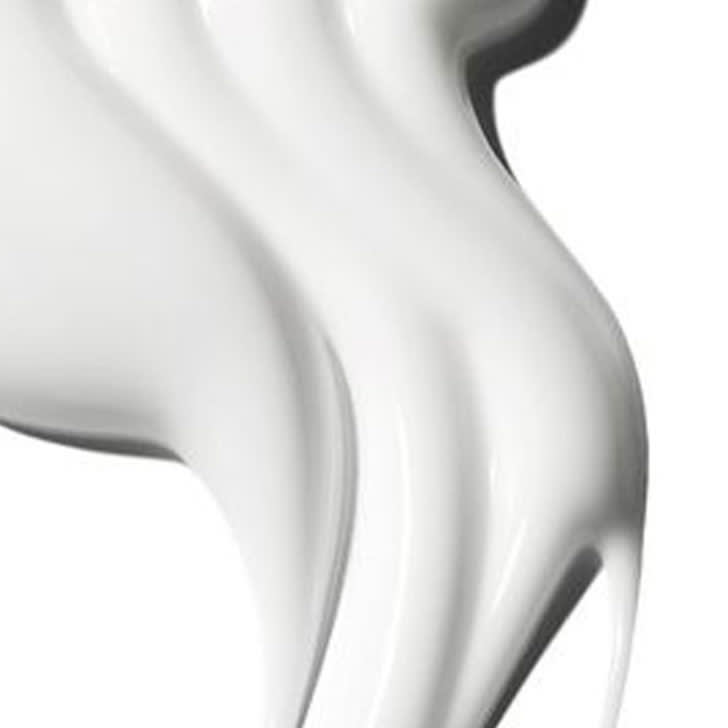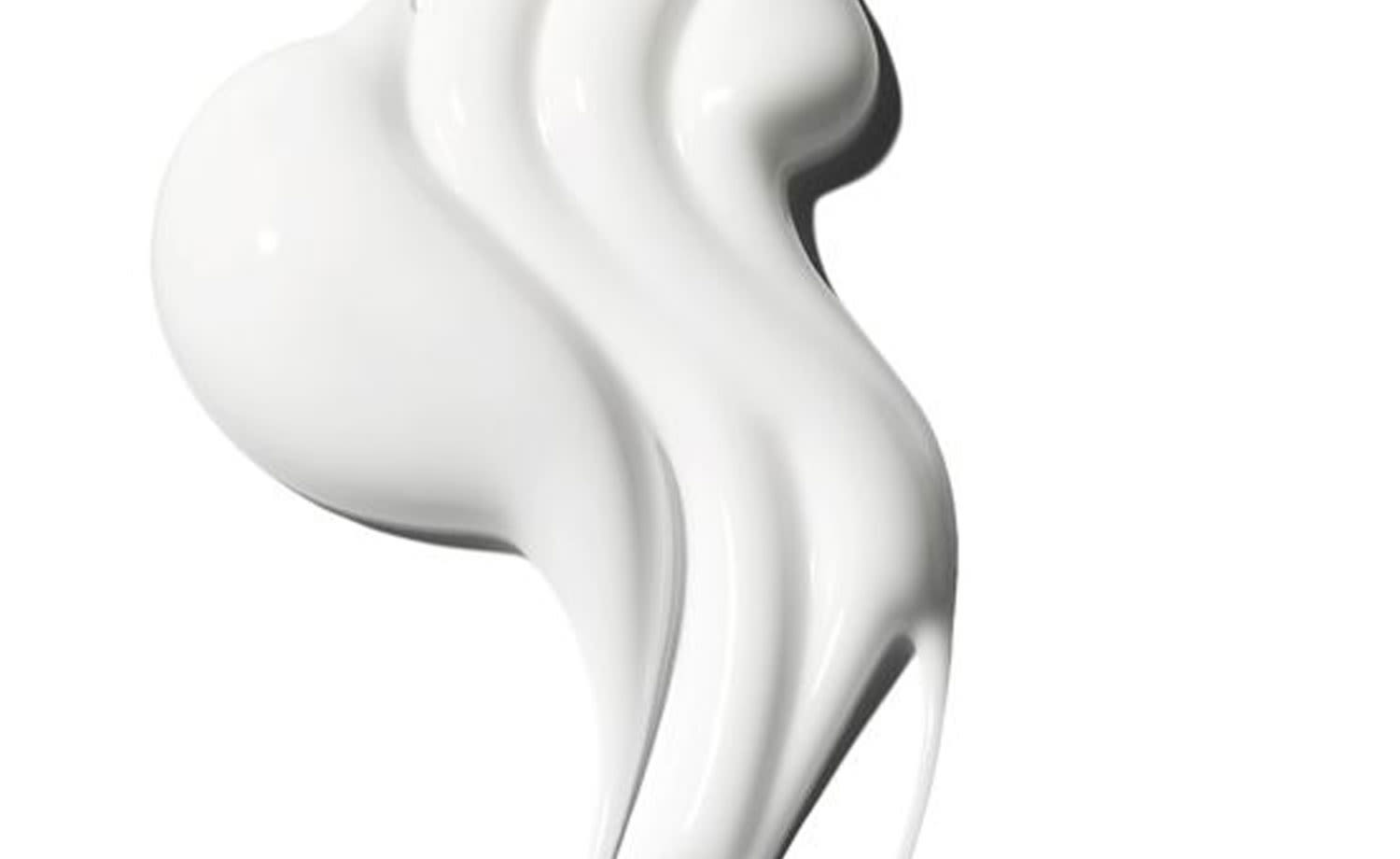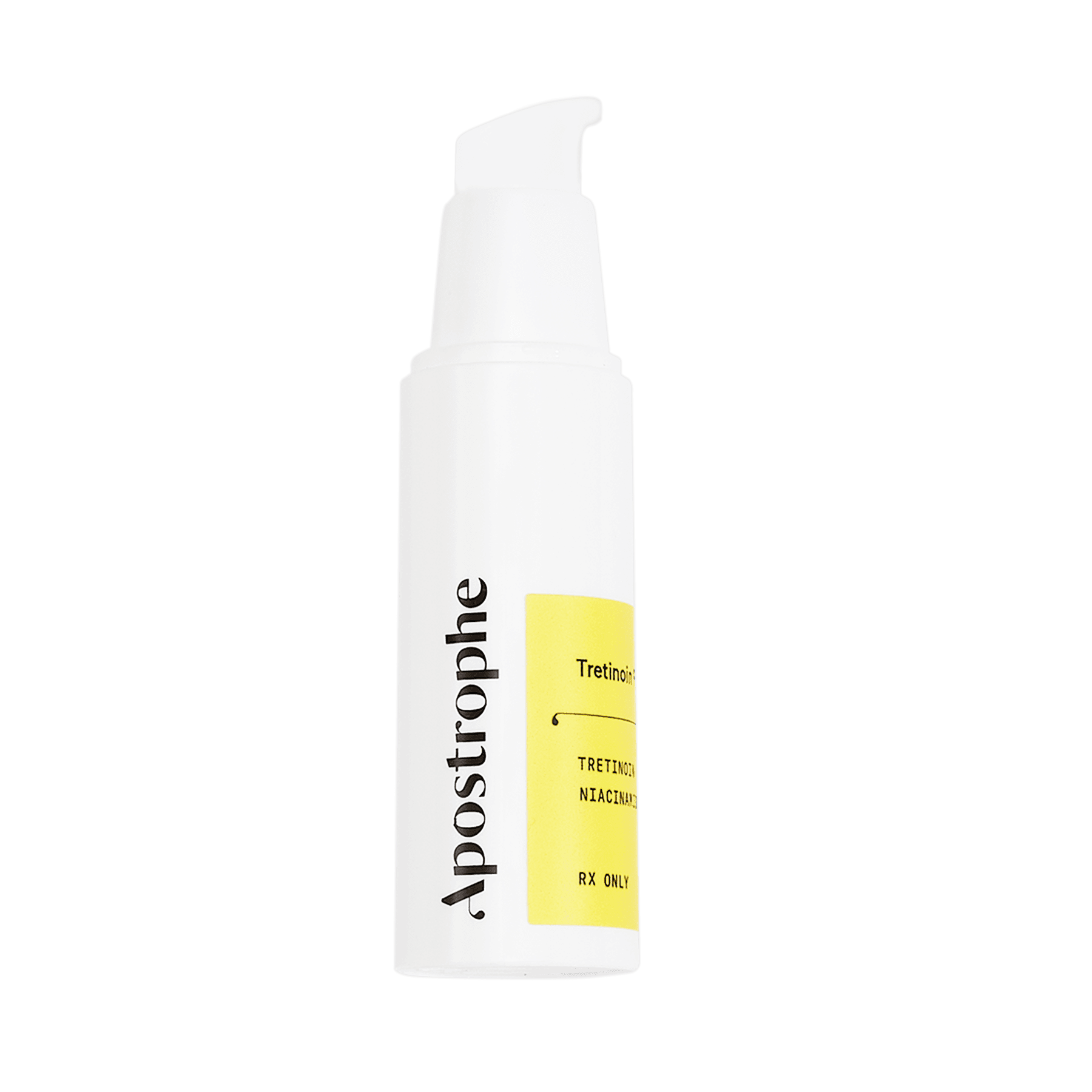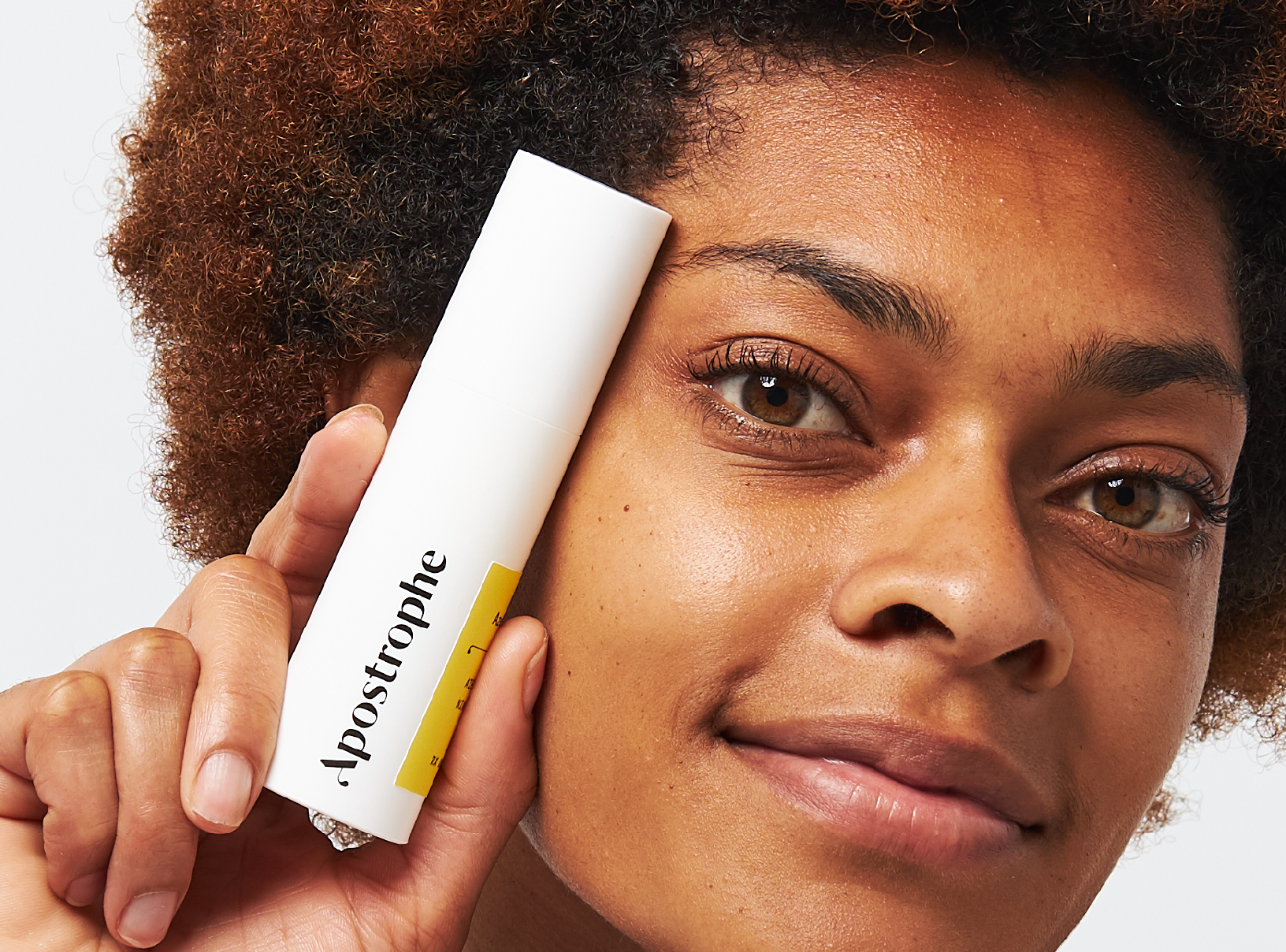Education
Neck Wrinkles: Causes, Prevention & Treatment


SHARE
Education
Neck Wrinkles: Causes, Prevention & Treatment
Medically reviewed by Kristin Hall, FNP
Written by Apostrophe Team
Last updated 10/1/2024
Have you ever noticed horizontal lines on your neck? While most of us can easily spot wrinkles that affect our forehead, eyes, or other parts of the face, it’s far easier to miss lines that develop elsewhere.
Just like the skin on your face and the other parts of your body, the skin on your neck is subject to the effects of aging.
As the years go by, you may notice lines forming on your neck. Referred to as neck wrinkles or neck lines, these small folds in your skin can develop around your shoulder blades or higher up your neck close to your face.
While neck wrinkles are partly unavoidable, some habits and lifestyle choices may contribute to these annoying signs of aging, including a phenomenon called “tech neck.”
Below, we’ve explained how neck wrinkles develop, as well as the main factors that may cause you to develop lines and wrinkles in your neck over time.
We’ve also shared science-based techniques, products, and cosmetic procedures that you can use to prevent neck wrinkles from forming and treat them after they appear.
Neck Wrinkles: The Basics
Neck wrinkles are exactly what they sound like -- wrinkles that develop on and around your neck. You may notice wrinkles and other lines form when you bend your neck or move your head in certain directions.
Like other wrinkles, neck wrinkles are a natural sign of aging that develop as your skin becomes thinner and less elastic.
Habits and activities that damage your skin, such as spending lots of time in the sun or smoking, may cause neck wrinkles and other signs of aging to develop faster.
You can prevent neck wrinkles by practicing good skincare habits and living a healthy life. Products like sunscreen, moisturizers, and anti-aging treatments may help to make any existing wrinkles you have less visible.
What Causes Neck Wrinkles?
Just like other wrinkles, the wrinkles that affect your neck develop gradually over the course of years and decades as a result of changes in your skin.
As you grow older, it’s normal for your skin to become thinner and less elastic. You may notice that you have less fat under certain areas of your skin than you did before or that your skin has a more coarse, rough texture.
These changes aren’t just superficial. Below the surface of your skin, changes also occur in its chemical composition. Proteins such as type VII collagen, which provide your skin with stability, become less common, weakening the bond between your inner and outer skin layers.
Combined with the always-there effects of gravity, these changes in your skin can cause lines to form, particularly in areas of skin that move frequently.
Some parts of the skin aging process are intrinsic, meaning they happen naturally as a result of your body getting older.
For example, factors like your genes, hormones, and metabolic processes, which are outside of your control, all affect the way your skin looks.
Other aspects of the skin aging process are extrinsic, meaning they’re caused by certain habits or behaviors.
A wide variety of different extrinsic factors can cause wrinkles to develop on your neck, face, and other parts of your body. These include:
Sun exposure. Exposure to the sun is one of the biggest contributors to wrinkles, lines, and other signs of aging. In fact, according to the Skin Cancer Foundation, exposure to sunlight is responsible for 90 percent of visible changes to your skin. Sunlight damages your skin through UV radiation, which can affect your skin’s DNA and harm collagen fibers. Over time, this process degrades your skin and reduces its ability to remain smooth, flexible, and elastic.
Movement. Moving your skin into certain positions can cause it to develop creases that, over time, slowly turn into deeper and more noticeable wrinkles. Research shows that facial wrinkles are often caused by repetitive expressions such as smiling, squinting, and frowning. Similarly, wrinkles that develop on your neck may be a consequence of certain aspects of your posture.
Smoking. Smoking damages your skin, increasing your risk of developing wrinkles over time. Research shows that smokers tend to have less elastic skin than people who don’t smoke, as well as a higher degree of visible wrinkling.
Other extrinsic factors, such as repeated facial expressions or movements, may also contribute to wrinkles on your face, neck, and other parts of your body.
How to Prevent Neck Wrinkles
The most effective way to get rid of neck wrinkles and other signs of aging is to prevent them from developing in the first place. Use the following techniques to limit damage to your skin and stop wrinkles from forming:
Stay out of the sun. Sun exposure is the biggest extrinsic cause of skin aging, making it important to limit your time outdoors in direct sunlight. If you live in an area that gets lots of natural sunlight, try to limit your time outside during peak sunlight hours. Wear a hat and spend time in the shade to reduce your exposure to harmful UV radiation. In addition to causing wrinkles, sun exposure can contribute to other signs of aging, such as age spots, spider veins, loose skin, and changes in your complexion.
Use sunscreen. To protect yourself from sun-related skin damage, make sure that you apply sunscreen to any visible parts of your body before you spend time outdoors. The American Academy of Dermatology recommends using an SPF 30+ sunscreen with broad-spectrum protection. If you’re at the beach or pool, apply a waterproof sunscreen and reapply your sunscreen regularly after spending time in the water.
Don’t use tanning beds. As well as avoiding limiting your exposure to natural sunlight, it’s also important to avoid unnatural sources of UV radiation such as tanning beds, most of which deliver even more intense UV rays than daytime sunlight.
If you smoke, try to quit. Smoking speeds up the effects of aging on your skin, making neck wrinkles more obvious. Our guide to quitting smoking shares proven strategies that you can use to kick the habit for better health and younger-looking skin.
Avoid “tech neck” posture. Wrinkles often develop when your skin folds into a certain pattern again and again. For example, the fine lines that develop around your eyes may be caused, at least in part, by the effects of squinting. Some experts believe that “tech neck” -- a type of prolonged neck flexion that’s related to smartphone and computer use -- may contribute to neck wrinkles. If you’re someone that logs lots of hours on your phone or in front of a computer screen, try to avoid constantly lowering your head. Focus on maintaining good posture and try to switch sitting positions often to keep yourself active.
How to Get Rid of Neck Wrinkles
If you already have wrinkles on your neck, adding certain products to your skincare routine may help to make them lighter and less visible. Some treatments may also get rid of other aspects of skin aging, such as sagging and discoloration.
Try the following skin care products and treatments to get rid of neck wrinkles:
Apply Moisturizer to Your Neck
Moisturizer helps to trap water inside your skin, improving its appearance and making fine lines and wrinkles harder to see. If you have visible wrinkles on your neck, try applying moisturizer to the surrounding skin to increase fullness and make them less obvious.
For best results, look for a moisturizer that’s designed to hold in moisture without causing your skin to feel overly oily. Use moisturizers that contain hyaluronic acid, a natural agent that can hold more than 1,000 times its weight in water.
If you’re prone to dry skin, try to apply moisturizer as soon as you finish bathing, right after you dry your skin with a towel.
Use Topical Retinoids
Retinoids are medications that work by speeding up your body’s process of creating new skin cells. Although they’re best known as acne treatments, many topical retinoids also have major anti-aging effects, including the ability to lighten fine lines and wrinkles.
Retinol, a retinoid that’s available in over-the-counter skin creams, has been found to improve aging-related wrinkles that can form on the body.
Tretinoin, a more powerful retinoid, is backed up by even more evidence showing that it can reduce wrinkles, age spots, and other signs of aging.
Our guide to using retinoids for wrinkles goes into more detail about how topical retinoids work, as well as how you can use them to treat the effects of aging on your skin.
Consider a Cosmetic Procedure
Several cosmetic procedures are available to treat wrinkles, age spots, and other signs of aging that can develop on your skin.
Popular cosmetic procedures for skin aging include botulinum toxin injections (Botox®), dermal fillers, and procedures such as skin resurfacing.
Not all of these treatments are appropriate for neck wrinkles. However, a procedure called the “Nefertiti lift,” which involves injecting botulinum toxin into the jawline, is often used to improve the appearance of the neck and jawline.
Another procedure called microbotox, which involves injecting multiple microdroplets of diluted botulinum toxin, is also used to treat aging that affects the lower face and neck.
These procedures can vary in price depending on your location and the extent of work required to treat your wrinkles. They may need to be repeated over time to maintain your results.
Do “Turkey Neck” Exercises Work?
If you’ve searched online for information about treating wrinkles and loose skin that can develop around your neck, you may have seen exercises designed to treat the “turkey neck.”
Turkey neck is a term that’s used to refer to the loose skin that can hang from your jaw and neck as you get older. It’s a normal sign of aging that, similar to neck wrinkles, might get worse due to sun exposure or habits like smoking.
Many videos and how-to guides recommend performing facial exercises, including facial “yoga,” to tighten the skin under your neck and treat this sagging.
While research on the effects of these exercises isn’t very extensive, a study published in 2018 found that they appear to offer mild benefits for mid-face and lower-face fullness.
However, there’s no evidence that these exercises can get rid of wrinkles or improve your skin’s elasticity.
In Conclusion
Neck wrinkles are a common sign of aging. Like other signs of skin aging, they’re caused by a mix of intrinsic factors and habits such as sun exposure and smoking.
To reduce your risk of developing wrinkles on your neck, make sure to keep your skin protected when you’re out in the sun. You may also benefit from using anti-aging products such as topical retinoids and a skin-friendly moisturizer.
Shop this post

Tretinoin
Like what you just read? Sign up for our email list to get the scoop on skincare science delivered straight to your inbox.

Deep Dives
A dermatologist shares his thoughts on the recent studies about benzoyl peroxide and benzene.
Read More
Education
What is milia?
What is milia? Today, we’re jumping into one type of bump that you may have heard about most commonly in infants — milia.
Read More
Education
Best moisturizer for acne-prone skin
If you have combination acne-prone skin, figuring out which moisturizer is best for your skin might be tough. In this guide, we break down the best moisturizer for combination, acne-prone skin.
Read More
